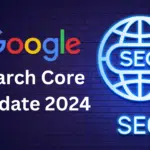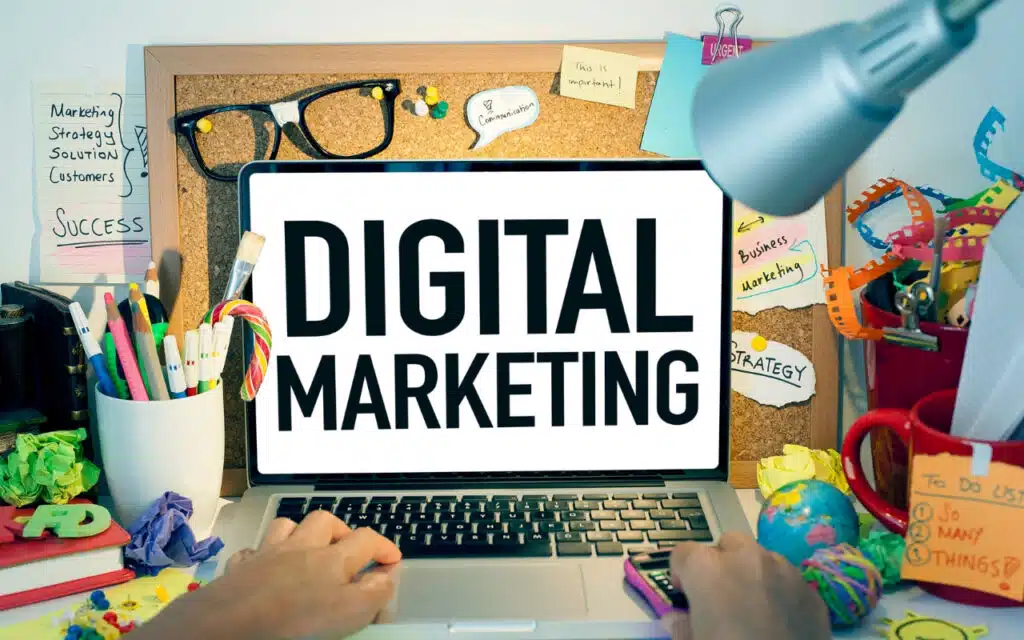Ever wondered how cool brands seem to pop up everywhere you go online? From your favorite social media feed to that funny ad you can’t skip on YouTube, it’s all thanks to the magic of digital marketing.
So, what exactly is it? Imagine digital marketing as the toolbox you use to reach new customers and grow your business online. It’s like having a megaphone in the digital world, but instead of yelling, you’re attracting people with targeted messages and engaging content.
Why is it important? Think about it this way: everyone’s glued to their screens these days, and digital marketing is the key to unlocking the potential of this massive audience. It helps you:
- Reach more people:No longer are you limited by geographical boundaries. The internet lets you connect with potential customers anywhere in the world.
- Build relationships:You can have real conversations with your audience, answer their questions, and build trust in your brand.
- Get measurable results:Unlike traditional marketing, you can track exactly how your campaigns are performing and adjust your strategy for better results.
So, what are the tools in this digital marketing toolbox? Let’s dive into some of the most common ones:
- Search Engine Optimization (SEO): This is all about making your website the answer people are searching for online. What you do: Optimize your website content with relevant keywords, build backlinks from other websites, and make sure your site is mobile-friendly. How it helps: SEO Services helps when people search for something related to your business, your website shows up at the top of the search results, driving more traffic your way.
- Social Media Marketing: This involves using platforms like Facebook, Instagram, and Twitter to connect with your audience, share your content, and build brand awareness. What you do: Create engaging posts, run contests and giveaways, respond to comments and messages, and collaborate with influencers. How it helps: You can build a community around your brand, get valuable customer feedback, and promote your products or services directly.
- Digital Advertising: This is like putting up online billboards. You can pay to reach a specific audience on various platforms like search engines, social media, and websites. What you do: Create targeted ads based on demographics, interests, and online behavior. How it helps: You can get laser-focused exposure for your brand and drive conversions, like website visits or product sales.
- Email Marketing: This involves sending personalized emails to your audience to nurture leads, promote special offers, and build brand loyalty. What you do: Build an email list by offering valuable incentives, segment your audience based on interests, and craft compelling email content. How it helps: You can stay connected with your audience in a personal way, drive sales, and build long-term relationships with your customers.
- Content Marketing: This is all about creating and sharing valuable content, like blog posts, videos, and infographics, to attract and engage your audience. What you do: Identify your target audience’s interests, create informative and engaging content consistently, and promote your content across different channels. How it helps: You establish yourself as a thought leader in your industry, attract organic traffic to your website, and build trust with potential customers.
- Reputation Management: This involves monitoring and managing your online reputation by responding to reviews, addressing customer concerns, and proactively building positive brand sentiment. What you do: Encourage happy customers to leave reviews, respond to both positive and negative feedback in a timely and professional manner, and actively engage with your online community. How it helps: You can control the narrative about your brand online, build trust with potential customers, and showcase your commitment to customer satisfaction.
- Brand Building: This is the process of creating a strong and recognizable brand identity that resonates with your target audience. What you do: Define your brand values, create a consistent visual identity, and tell your brand story through all your digital marketing activities. How it helps: You create a lasting impression on your audience, differentiate yourself from competitors, and build customer loyalty.
Remember, digital marketing is an ongoing process. It’s about experimenting, learning from your results, and constantly adapting your strategy to stay ahead of the curve. With the right approach, you can use this powerful toolbox to unlock the full potential of your business in the ever-evolving digital world.







